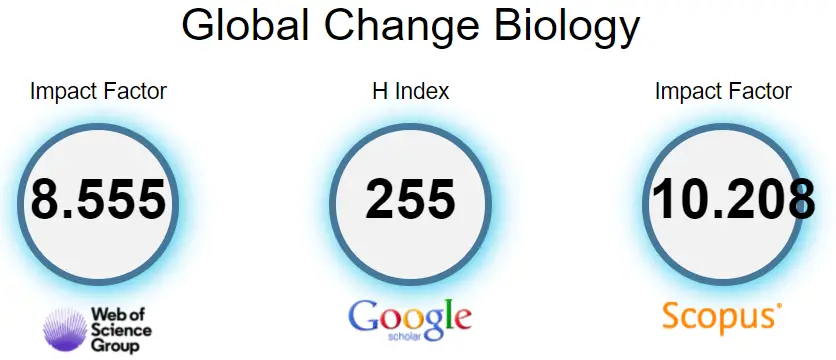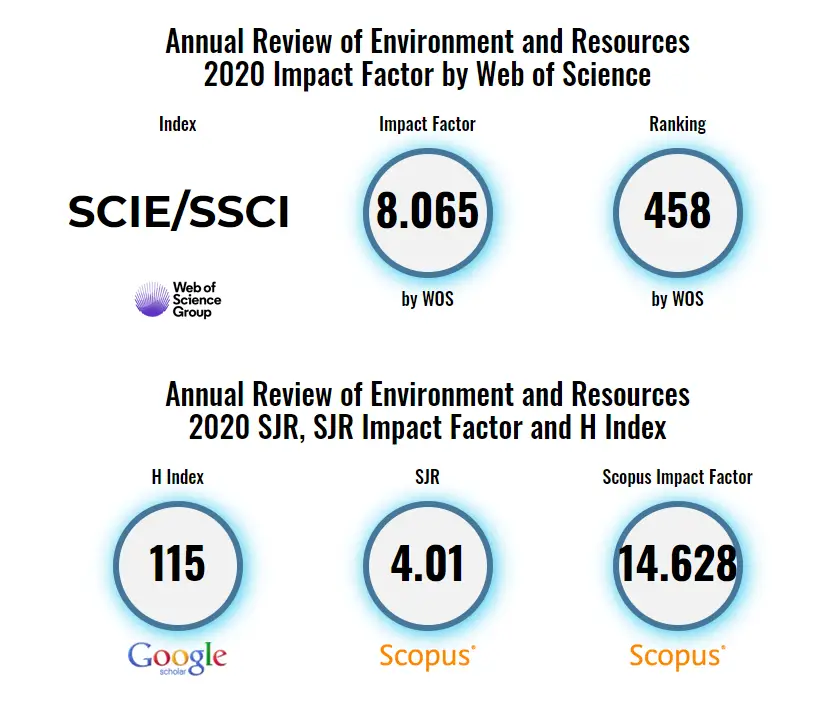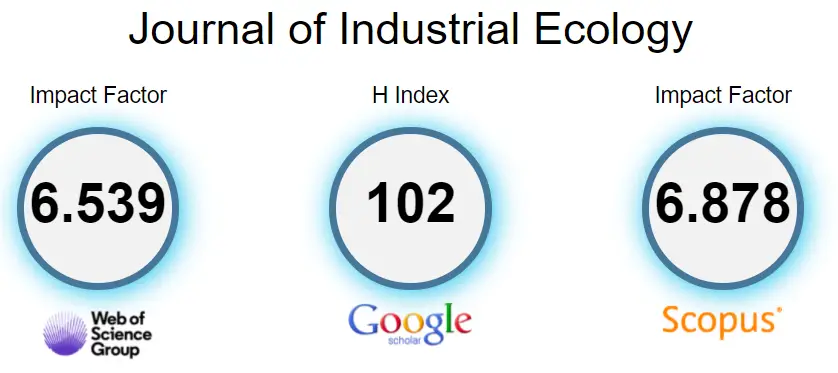Top Environmental journals publish papers on a wide variety of environmental topics. Each journal possesses an impact score. They also follow their own approach when selecting papers to publish.
This makes it vital to choose the right journal. Especially if you wish to get your own environmental studies paper published. We researched the ten top environmental journals and compiled them into a list.
Let’s look at the ten top environmental journals.
Table of Contents
#1. Nature Climate Change

(You can see the history of its scientometric data on our database here)
Nature Climate Change journal is a peer-reviewed scientific journal. This journal’s publishing is on a monthly basis. It belongs to the Nature Publishing Group. It focuses on research related to global warming, climate change, and their effects.
It was first established in 2011 [1]. The publication is a continuation of Nature Reports Climate Change from 2007. The journal also serves as a forum for experts to discuss, analyze, and review articles. It has an acceptance rate of 10%.
It also includes a Research Highlights section. This section highlights important developments in the field.
Some of the key topics covered in this Top Environmental Journals include:
- Adaptation
- Anthropology
- Atmospheric science
- Biochemistry
- Communication
- Ecology
- Ethics
- Geography
- Hydrology
- Modeling
- Oceanography

#2. Applied Catalysis B: Environmental

(You can see the history of its scientometric data on our database here)
Applied Catalysis B: Environmental publishes original, unique, and high-impact research contributions from various fields. This entry into our top environmental journals list includes topics [3] related to:
- Environmental pollution abatement through catalytic converters.
- Clean energy production using catalytic processes and routes.
- New technologies related to catalysts and the catalytic combustion process.
The journal’s publisher is Elsevier. They accept reviews, research papers, and Letters to the Editor [4]. Other papers that deal with reactions or processes related to catalysis can be sent to Applied Catalysis A: General. Papers related to enzymatic topics can be sent to Journal of Molecular B.
Applied Catalysis B: Environmental is a great choice for authors that wish to publish papers related to catalysis and clean energy production. The journal has an acceptance rate of 15% and an average review time of 3.9 weeks. It published a total of 1,102 articles in 2020.

#3. Global Change Biology

(You can see the history of its scientometric data on our database here)
Global Change Biology is a peer-reviewed scientific journal. This entry in our top environmental journals list is published on a bi-weekly basis. It focuses on understanding various aspects of environmental change and biological systems. Some of the topics [5] they cover include:
- Rising tropospheric ozone and carbon dioxide concentrations.
- Climate change
- Eutrophication
- Loss of biodiversity
- Contaminants and their impact on the globe
- Invasive species
- Global climate change
Wiley-Blackwell publishes this journal. It’s first issue was released in December 2012. Researchers can publish their papers for free in this journal. However, they will be charged if their work includes color figures. The journal has an acceptance rate of 55.6% [6].

#4. Annual Review of Environment and Resources

(You can see the history of its scientometric data on our database here)
The Annual Review of Environmental and Resources is a popular peer-reviewed book series. This entry in our top environmental journals list is published annually. It publishes review articles related to environmental engineering and environmental science annually.
The book series became open-access in 2020 [7]. It is available both electronically and in print since.
The book series’ initial publication was in 1976. At the time, it was published under the name Annual Review of Energy. It initially focused on a wide variety of energy-related topics in the United States.
The publication renamed itself in recognition of the fact that energy issues were connected to environmental issues [8].

#5. Environmental Innovation and Societal Transitions

(You can see the history of its scientometric data on our database here)
The Environmental Innovation and Societal Transitions journal is published by Elsevier. It provides a great platform for environmental and socioeconomic research. It publishes studies related to socio-economic transactions. These transactions then contribute to environmental sustainability [9].
Many of the key topics published in this journal are related to fossil fuels and their role in climate change. The journal strives to answer difficult questions. These relate to economic, social, political, and behavioral factors, and how they interact.
The journal reviews all submissions using originality, quality, precision criteria. They typically welcome a wide variety of categories. The journal also offers special issues for topics addressing exciting themes. However, they reserve these only for high-quality contributions.

#6. Environment and Planning D: Society and Space

(You can see the history of its scientometric data on our database here)
Environment and Planning D: Society and Space refers to both a peer-reviewed journal and its companion website. They publish content including essays, articles, interviews, and book reviews [10].
This project was founded as Society and Space in 1979. It’s initial focus was on human geography, and has been expanding its scope since. The journal is also a member of the Committee on Publication Ethics (COPE).
The project currently focuses on topics related to social struggles for control of space, regions, or resources. They aim to investigate and assess systems of power and how they shape people’s lives.
They welcome research that pushes conceptual boundaries and applies theories in innovative ways.

#7. Earth’s Future

(You can see the history of its scientometric data on our database here)
Earth’s Future is a Gold Open Access journal that examines the state of Earth and its population [11]. It focuses on creating sustainable and resilient communities. This journal is published on a monthly basis by Wiley-Blackwell. It was started in 2013 and is considered one of the most important environmental journals. It recorded an acceptance rate of 40% in 2019 [12].
Much of the research published is related to studies on the Anthropocene epoch. It’s goal is to help predict the future by studying and reviewing the past.
The publication’s most-cited papers include:
- A Systematic Study of Sustainable Development Goal (SDG) Interactions
- Global warming releases microplastic legacy frozen in Arctic Sea ice
- Probabilistic 21st and 22nd century sea‐level projections at a global network of tide‐gauge sites
[Other data unavailable on the Earth’s Future]
#8 Environmental International

(You can see the history of its scientometric data on our database here)
Environmental International is an open-access multi-disciplinary journal published by Elsevier [13]. It publishes high-quality and unique information related to the Environmental Health Sciences field. The journal accepts research on a wide variety of topics. It’s main research areas include:
- Public Health and Health Impact Assessment, Environmental Epidemiology
- Environmental Health and Risk Assessment, Environmental Chemistry
- Environmental Processes, Environmental Microbiology and Toxicology
- Environmental Technology
Each of the research areas mentioned above are overseen by different editors. The journal has an average review time of 4.4 weeks and charges approximately $3500 to publish each article. It published a total of 862 articles in 2020.

#9. Global Biogeochemical Cycles

(You can see the history of its scientometric data on our database here)
Global Biogeochemical Cycles is a journal first published by Wiley in January 2004. It includes research articles related to regional and global biogeochemical interactions [14]. It also accepts research related to local studies that demonstrate biogeochemical processing’s impact on regional and global regions.
Researchers may gather data and information from the geologic past. They may also gather information data and information from more recent sources.
Many of the research topics are focused on environmental changes due to marine, atmospheric, hydrological, geologic, and anthropogenic sources.
The most cited works in this journal include:
- Emission of trace gases and aerosols from biomass burning
- Terrestrial ecosystem production: A process model based on global satellite and surface data
- Soil organic carbon pools in the northern circumpolar permafrost region

#10. Journal of Industrial Ecology

(You can see the history of its scientometric data on our database here)
The Journal of Industrial Ecology is a peer-reviewed journal owned by Yale. Wiley-Blackwell publishes this journal on a bimonthly basis.
This journal publishes cutting edge innovative research from environmental managers, advocates, and policy makers. It’s primary focus is on topics related to environmental science, policy and management [15].
The journal publishes topics related to the following:
- Technological changes
- Environmental design
- Dematerialization and decarbonization
- Material and energy flow studies
- Eco-efficiency
- Eco-industrial parks
- Environmental policy centered on products
The publication published 159 works in 2020 and is one of the most popular publications for topics related to industrial ecology [16].

Final Word
The environmental journals listed above cover a variety of topics in many different fields. Each one possesses a high impact score. However, these journals are best suited for certain types of research.
It is best to understand each journal’s specialty before deciding where to publish your paper. We hope the above list proves helpful in your search for the top environmental journals.
You might also be interested in these:
- Top Nursing Journals – How to get published in 2021??
- Top Multidisciplinary Journals – How to get published in 2021?
- Top Energy Journals – How to get published in 2021??
- Top Psychology Journals – How to get published in 2021?
- Top Engineering Journals – How to get published in 2021?
Reference
[1]. https://doi.org/10.1038%2Fclimate.2010.41 – Journal establishing date
[2]. Scientific Database
[3]. https://www.scijournal.org/impact-factor-of-appl-catal-b-environ.shtml – Topics covered
[4]. https://www.elsevier.com/journals/applied-catalysis-b-environmental/0926-3373/guide-for-authors – Types of works published
[5]. https://www.scijournal.org/impact-factor-of-global-change-biol.shtml – Topics the journal covers
[6]. Scientific Database – Journal acceptance rate
[7]. https://www.jisc.ac.uk/news/jisc-supports-pioneering-open-access-model-subscribe-to-open-10-mar-2020 – Open access date
[8]. http://www.annualreviews.org/doi/10.1146/annurev.eg.28.010103.100001 – Journal renaming
[9]. https://www.journals.elsevier.com/environmental-innovation-and-societal-transitions – Types of topics covered.
[10]. https://www.scijournal.org/impact-factor-of-environment-and-planning-d-society-space.shtml – Types of works published
[11]. https://agupubs.onlinelibrary.wiley.com/journal/23284277 – Journal scope
[12]. https://agupubs.onlinelibrary.wiley.com/doi/full/10.1029/2020EF001536 – Acceptance rate
[13]. https://www.scijournal.org/impact-factor-of-global-biogeochem-cy.shtml – Journal publisher name
[14]. https://www.journals.elsevier.com/environment-international – Research areas covered
[15]. https://onlinelibrary.wiley.com/journal/15309290 – Primary focus topics
[16]. Scientific Database – Annual publication volume



Hai mam, this is Naveen can you suggest me free or low cost sci journal with easy and fast publication.
hai mam this is sharvankumar can you suggest me free and fast publication journal in environmental science